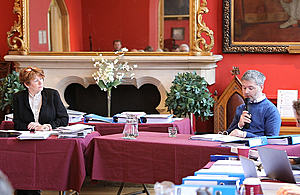16 out of 22 Rosewell recommendations implemented as Planning Inspectorate publishes updated Action Plan

Today, 9 March 2020, the Planning Inspectorate have published an update to the Inquiries Review Action Plan. The Action Plan, first published in May 2019, sets out how the recommendations from the Rosewell Review into Planning Inquiries are being implemented.
The Planning Inspectorate has made significant progress with 16 of the 22 recommendations delivered and all others well under way. Most importantly, all planning appeal inquiries are now following the new inquiries process. A key part of the changes is Inspectors taking control of the process from the start and having a more proactive role through early engagement with appeal parties at the case management conference.
Appeal parties also had to adapt to the demands of the new ways of working, cooperating with ambitious timescales and ensuring their readiness to meet inquiry deadlines. The result is a fantastic example of how all parties can work together to improve the way the planning system works with greater certainty and achieving consistently faster decisions.
Since the start of issuing inquiry appeal decisions in March 2019, in the new ‘Rosewell style’, 72 decisions have been decided following the new process and timeline. 100% of inquiry appeal cases that started as an inquiry and were decided by an inspector have been completed in 26 weeks or less. All currently under consideration have a high probability of achieving the overall target of receiving a decision by week 24/26 from receipt. The average time taken from valid inquiry appeal received to decision by the inspector has been 22.6 weeks – which is less than half the time taken in previous years.
Progress against the 22 Recommendations
| Number | Recommendation | Implemented |
|---|---|---|
| 1 | Improving the submission and validation of appeals | |
| 2 | Reforming the statement of case | ✓ |
| 3 | Streamlining the process for deciding the appeal mode to be used | ✓ |
| 4 | Issuing a start letter more quickly | ✓ |
| 5 | Preparing for the inquiry (start letter to start of inquiry) | ✓ |
| 6 | Costs of the Inquiry | |
| 7 | Statements of Common Ground | ✓ |
| 8 | Requiring early inspector engagement | ✓ |
| 9 | Preparation in approaching the examination of the evidence | ✓ |
| 10 | The timely submission of inquiry documents | |
| 11 | Inspectorate to enforce timely submission of docs including with sanctions | ✓ |
| 12 | Encouraging early identification of Rule 6 parties | ✓ |
| 13 | The conduct of inquiries and the role played by inspectors | ✓ |
| 14 | Use of technology | |
| 15 | The role of interested parties during the event | ✓ |
| 16 | Allocation of time post inquiry for the inspector to write up the case | ✓ |
| 17 | Decisions made directly by the Secretary of State | |
| 18 | Inspector availability and the management of casework | ✓ |
| 19 | The number of withdrawn inquiry appeals | ✓ |
| 20 | The benefits of a policy feedback loop | ✓ |
| 21 | Implementing the proposals and monitoring future performance | ✓ |
| 22 | Reforming data collection and performance measurement |
Last updated 28 September 2020 + show all updates
-
Updated version of Action Plan
-
First published.